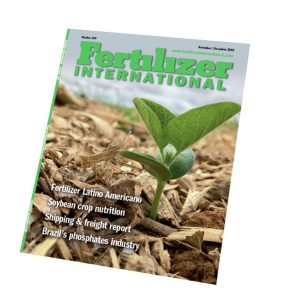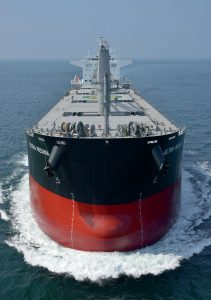
Potash project listing 2020
Fertilizer International presents a global round-up of current potash projects.

Fertilizer International presents a global round-up of current potash projects.

The late autumn gloom has darkened in recent weeks, as Europe slipped back into a lockdown that seemed as inevitable as the encroaching winter.

With around 90 percent of global trade requiring sea transport, shipping remains the life blood of the world economy. Intercontinental trade, the bulk transport of raw materials, and the import/export of food and manufactured goods all rely on affordable and effective shipping.

More than 330 million tonnes of soybean are grown globally every year and processed to yield oil and meal, a major source of animal protein. Its cultivation in Brazil, the US and other countries requires large applications of potash and phosphate. The nutrient needs of this major oilseed crop are reviewed.

This case study describes a backflow scenario in a pressurised leak detection system. Backflow can occur in case of a relatively large leak (crack in liner), where the flowmeter installed downstream of the equipment acts as a flow restriction, allowing pressure to build up.

This year has been one of the stranger ones in my life, and I’m sure yours as well. Looking back from the perspective of late October 2020, I had no idea at the start of the year how much time I was going to be spending in my study rather than in the office or a hotel! Covid has forced major lifestyle changes upon all of us this year, and it has definitely accelerated some trends that were already making themselves felt, but which have suddenly become a major part of our forced adaptation to strange times. I haven’t used cash since March, for example, except at one stubborn local takeaway that can’t take contactless payments. Perhaps the greatest of these changes has been enforced remote working, and that has meant looking at digital technologies and the way we can use them. Even those of us who are, shall we say, not digital natives or early adopters, have had to become intimate with both the potential and the pitfalls of Zoom, Teams and all of the rest.
The UK Agricultural Industries Confederation has announced that Sam Bell , UK Commercial Director at CF Industries and Nick Major , Corporate Affairs Director at ForFarmers have taken over as chairs for the AIC’s Fertiliser Executive Committee and Feed Executive Committee, respectively.

“There can be no life without soil, and no soil without life.” An insightful quote from Charles Kellogg, the renowned former chief of USDA’s soils bureau.

The commercial production of cannabis for medicinal purposes is expanding rapidly. This burgeoning market is opening up new opportunities for growers and fertilizer producers alike. Avishai Schneider , market development agronomist at Haifa Group, offers his advice for successful fertilization of this sensitive and difficult to grow crop.

The two agricultural products most strongly associated with the economies of Southeast Asia are the food staple rice and export commodity palm oil. We explore the link between the region’s agricultural productivity and its fertilizer consumption.